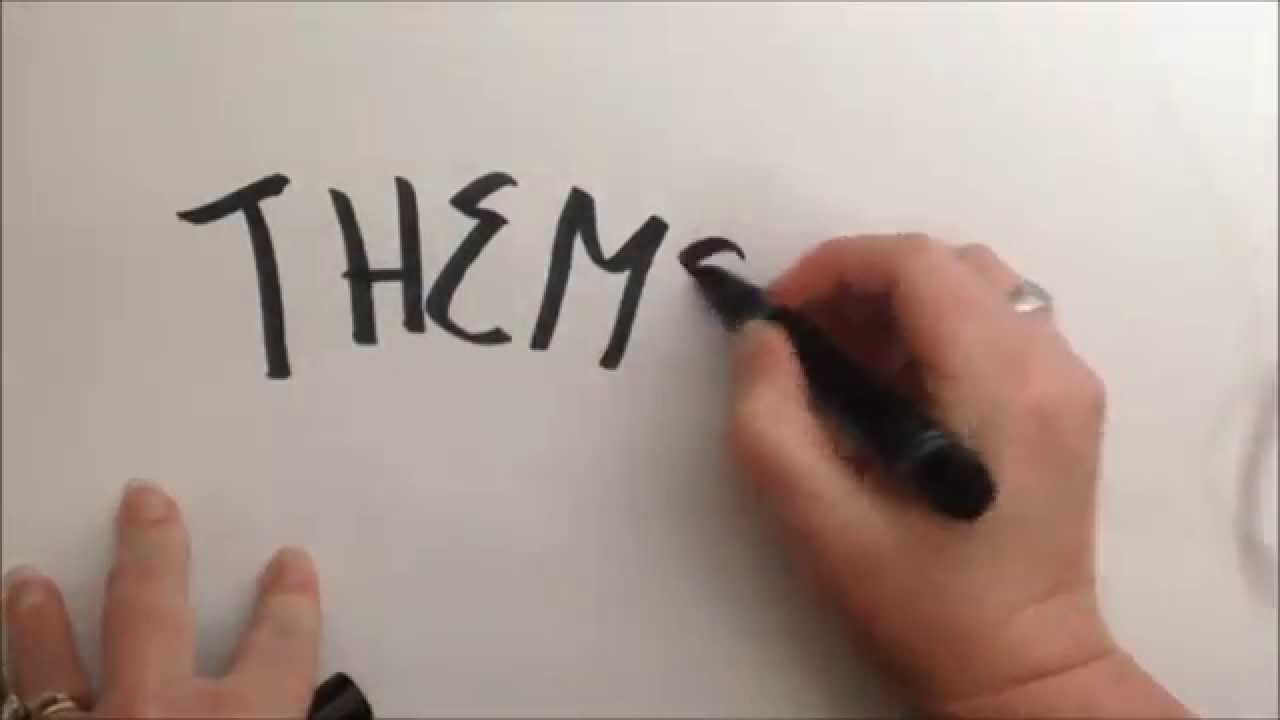
Determining Theme Through Collaborative Strategies
Interactive Video
•
English
•
6th - 10th Grade
•
Practice Problem
•
Medium
+2
Standards-aligned
Ethan Morris
Used 12+ times
FREE Resource
Standards-aligned
Read more
10 questions
Show all answers
1.
MULTIPLE CHOICE QUESTION
30 sec • 1 pt
What is the primary difference between a theme and a topic in literature?
Themes are directly stated by the author, whereas topics are inferred by the reader.
There is no significant difference; both terms can be used interchangeably.
Topics can only be identified in non-fiction, while themes are exclusive to fiction.
Themes are more complex and require deep analysis, while topics are surface-level subjects.
Tags
CCSS.RI. 9-10.9
CCSS.RL.6.2
CCSS.RL.7.2
CCSS.RL.8.2
CCSS.RL.9-10.2
2.
MULTIPLE CHOICE QUESTION
30 sec • 1 pt
Why is 'Finding Nemo' chosen as an example to explain themes?
Because it's a complex narrative with multiple hidden meanings.
It was randomly selected without any specific reasoning.
It's universally recognized and simplifies the understanding of themes.
Due to its literary acclaim and extensive analysis in academic circles.
Tags
CCSS.RI. 9-10.9
CCSS.RL.6.2
CCSS.RL.7.2
CCSS.RL.8.2
CCSS.RL.9-10.2
3.
MULTIPLE CHOICE QUESTION
30 sec • 1 pt
What is the first step in creating a theme statement according to the video?
Discussing the plot with peers.
Completing the reading of the text.
Identifying the author's background.
Listing all the characters in the story.
Tags
CCSS.RI. 9-10.9
CCSS.RL.6.2
CCSS.RL.7.2
CCSS.RL.8.2
CCSS.RL.9-10.2
4.
MULTIPLE CHOICE QUESTION
30 sec • 1 pt
How should a theme statement be structured?
Using complex literary terms to sound more academic.
It should be a direct quote from the text.
Starting with 'The author believes that...' and excluding character names.
By using specific character names and events from the story.
Tags
CCSS.RI. 9-10.9
CCSS.RL.6.2
CCSS.RL.7.2
CCSS.RL.8.2
CCSS.RL.9-10.2
5.
MULTIPLE CHOICE QUESTION
30 sec • 1 pt
What is an example of a too vague theme statement?
Trust is essential for personal growth.
Courage can be found in the most unlikely places.
Family is important.
Overcoming adversity leads to self-discovery.
Tags
CCSS.RI. 9-10.9
CCSS.RL.6.2
CCSS.RL.7.2
CCSS.RL.8.2
CCSS.RL.9-10.2
6.
MULTIPLE CHOICE QUESTION
30 sec • 1 pt
Why is it important not to use character names in theme statements?
To keep the theme statement universal and applicable beyond the story.
Because character names are copyrighted.
To avoid spoilers for those who haven't read the story.
Character names are often difficult to spell.
Tags
CCSS.RI. 9-10.9
CCSS.RL.6.2
CCSS.RL.7.2
CCSS.RL.8.2
CCSS.RL.9-10.2
7.
MULTIPLE CHOICE QUESTION
30 sec • 1 pt
What activity is suggested to practice theme identification in the classroom?
Drawing scenes that represent the theme of a story.
A quiz competition on identifying themes in various texts.
Writing an essay on the theme of a chosen book.
Creating paper balls with theme statements and exchanging them.
Tags
CCSS.RI. 9-10.9
CCSS.RL.6.2
CCSS.RL.7.2
CCSS.RL.8.2
CCSS.RL.9-10.2
Create a free account and access millions of resources
Create resources
Host any resource
Get auto-graded reports

Continue with Google

Continue with Email

Continue with Classlink

Continue with Clever
or continue with

Microsoft
%20(1).png)
Apple
Others
Already have an account?
Popular Resources on Wayground

10 questions
Forest Self-Management
Lesson
•
1st - 5th Grade

25 questions
Multiplication Facts
Quiz
•
5th Grade

30 questions
Thanksgiving Trivia
Quiz
•
9th - 12th Grade

30 questions
Thanksgiving Trivia
Quiz
•
6th Grade

11 questions
Would You Rather - Thanksgiving
Lesson
•
KG - 12th Grade

48 questions
The Eagle Way
Quiz
•
6th Grade

10 questions
Identifying equations
Quiz
•
KG - University

10 questions
Thanksgiving
Lesson
•
5th - 7th Grade
Discover more resources for English

52 questions
Hatchet Chapters 1-19
Quiz
•
6th Grade

2 questions
6W3 Week 4 Day 2
Quiz
•
7th Grade

10 questions
Thanksgiving Trivia Challenge: Test Your Knowledge!
Interactive video
•
6th - 10th Grade

6 questions
Reviewing Claims
Quiz
•
8th Grade

8 questions
February 16, 2021 - Do Now (RACES Writing Strategy)
Quiz
•
6th - 8th Grade

20 questions
Context Clues
Quiz
•
6th Grade

20 questions
Figurative Language Review
Quiz
•
6th Grade

20 questions
Aqua Hydro Roots Vocabulary Practice Quiz
Quiz
•
6th Grade